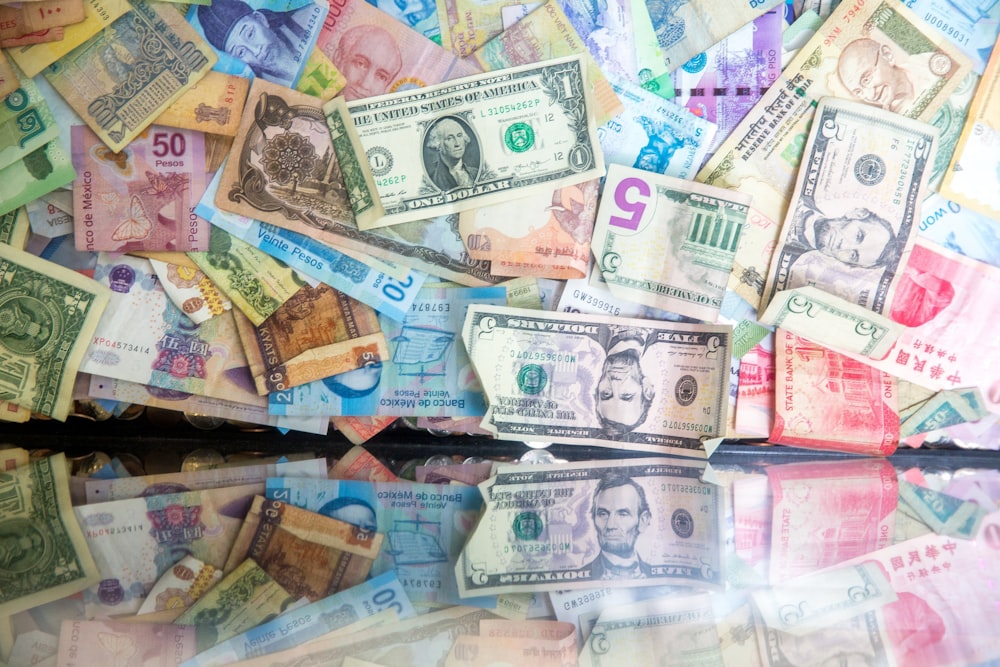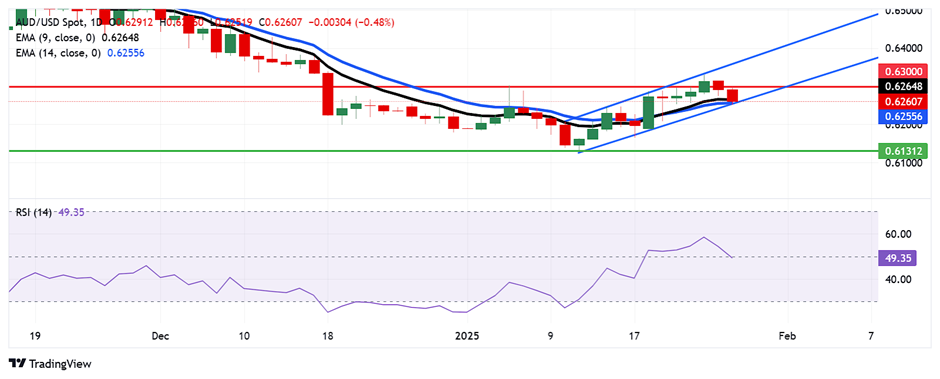Australian Dollar Loses Ground As US Dollar Appreciates Amid Latest Trump Threats
Image Source: Unsplash
- The Australian Dollar loses ground following tariff threats made by US President Donald Trump.
- The AUD faced challenges amid increased risk aversion due to news of growing momentum among Trump’s advisers to implement tariffs.
- Trump stated that he "wants tariffs 'much bigger' than 2.5%," the rate proposed by Treasury Secretary Scott Bessent.
The Australian Dollar (AUD) continues to decline for the second consecutive day against the US Dollar (USD) on Tuesday. The AUD/USD pair's weakness can be linked to tariff threats made by US President Donald Trump.
The risk-sensitive AUD also faced challenges amid increased risk aversion due to news on growing momentum among US President Donald Trump’s advisers to place 25% tariffs on Mexico and Canada as soon as February 1.
President Trump announced plans on Monday evening to impose tariffs on imports of computer chips, pharmaceuticals, steel, aluminum, and copper. The goal is to shift production to the United States (US) and bolster domestic manufacturing.
Trump also commented on the popular social media app TikTok, stating, “We will have a lot of people bidding on TikTok.” He emphasized his stance on limiting China’s involvement, saying, “Don’t want China involved in TikTok.”
Australian Dollar declines due to increased risk aversion regarding Trump’s policies
- The US Dollar Index (DXY), which tracks the value of the US Dollar against six major currencies, rises to near 107.80 at the time of writing. Traders will likely watch the US Durable Goods Orders, the Conference Board’s Consumer Confidence, and the Richmond Fed Manufacturing Index later on Tuesday.
- Scott Bessent, the Treasury Secretary under Trump, stated that he aims to introduce new universal tariffs on US imports, starting at 2.5%. These tariffs could rise to as much as 20%, reflecting Trump’s aggressive stance on trade policies, consistent with his campaign rhetoric last year.
- Speaking with reporters aboard Air Force One early Tuesday, US President Donald Trump stated that he “wants tariffs ‘much bigger’ than 2.5%,” as proposed by Treasury Secretary Scott Bessent. However, Trump noted that he has not yet decided on the specific tariff levels.
- The USD gained strength amid uncertainty regarding the impact of US President Donald Trump's trade and immigration policies. This backdrop may encourage the Federal Reserve (Fed) to maintain a cautious stance on cutting interest rates this year.
- According to S&P Global data released on Friday, the US Composite PMI fell to 52.4 in January from 55.4 in December. The Manufacturing PMI rose to 50.1 in January, surpassing the previous reading of 49.4 and exceeding the forecast of 49.6. However, the Services PMI dropped to 52.8 in January from 56.8 in December, falling short of the expected 56.5.
- However, Trump said on Thursday that he wants the Fed to cut interest rates immediately. "With oil prices going down, I'll demand that interest rates drop immediately, and likewise they should be dropping all over the world," said Trump at the World Economic Forum in Davos, Switzerland.
- The US Dollar faced challenges as Trump's remarks came before the Federal Reserve's (Fed) monetary policy meeting scheduled for January 28 and 29, with expectations the US central bank will hold rates steady.
- Traders expect the Fed to keep its benchmark overnight rate steady in the 4.25%-4.50% range at its January meeting. Moreover, Trump’s policies could drive inflationary pressures, potentially limiting the Fed to one more rate cut.
- China's NBS Manufacturing PMI fell to 49.1 in January, down from 50.1 in December, missing the market expectation of 50.1. Similarly, the NBS Non-Manufacturing PMI declined to 50.2 in January compared to December's 52.2 reading. As close trade partners, China's economic performance significantly impacts the Australian economy.
- The Australian Dollar also failed to gain support from China’s fresh stimulus measures to promote its development of index investment products, its latest effort to revive the ailing equity market. The China Securities Regulatory Commission (CSRC) has approved a second round of long-term stock investment pilot programs valued at 52 billion Yuan ($7.25 billion).
- China’s Industrial Profits declined by 3.3% year-over-year to CNY 7,431.05 billion in 2024, easing from the 4.7% drop recorded in the first 11 months of the year. This marks the third consecutive year of contraction, following a 2.3% decline in 2023. The continued downturn reflects ongoing economic challenges, including weak demand, rising deflationary pressures, and a prolonged slump in the property sector.
Technical Analysis: Australian Dollar tests 14-day EMA near 0.6250
The AUD/USD pair trades near 0.6260 on Tuesday, confined within an ascending channel on the daily chart, hinting at a potential bullish bias. The 14-day Relative Strength Index (RSI) is positioned on the 50 mark, suggesting a neutral market sentiment.
The AUD/USD pair tests immediate support at the 14-day Exponential Moving Average (EMA) of 0.6256. Additional support lies near the channel's lower boundary around 0.6250.
Regarding resistance, the AUD/USD pair could test the nine-day EMA at 0.6266, followed by the key psychological level of 0.6300. A break above the latter could reinforce the bullish bias and lead the pair to target the channel's upper boundary around 0.6360.
AUD/USD: Daily Chart
More By This Author:
GBP/JPY Price Analysis: Falls Toward 193.00 Near Nine-Day EMA Within Ascending ChannelWTI Advances To Near $74.50, Upside Seems Limited As Trump Demands OPEC+ Lower Oil Prices
Australian Dollar Strengthens Following Trump's Optimism On China
Information on these pages contains forward-looking statements that involve risks and uncertainties. Markets and instruments profiled on this page are for informational purposes only and should not ...
more




